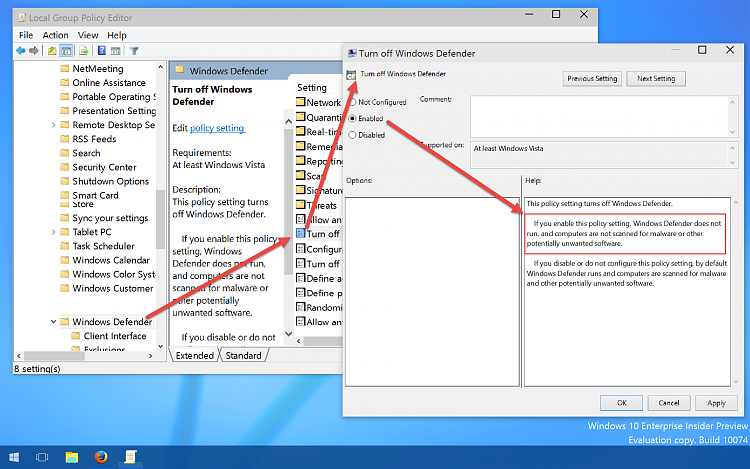

"This is a legacy setting that is no longer necessary as Microsoft Defender antivirus automatically turns itself off when it detects another antivirus program. "DisableAntiSpyware is intended to be used by OEMs and IT Pros to disable Microsoft Defender Antivirus and deploy another antivirus product during deployment," the page now states. 20, Microsoft changed the language on the DisableAntiSpyware documentation page (opens in new tab) to further clarify what's happening here. UPDATE: Microsoft tries to clarify the situationĪfter this story was initially posted Aug. But Defender will turn itself back on after a while if there's no other AV software installed - which, again, is a good thing.

That's a good option to have if you're testing system performance, for example. You can still temporarily disable Defender by going into Windows Security -> Virus & Threat Protection -> Virus & Threat Protection Settings -> Manage Settings, and then toggling off Real-Time Protection. It would leave you naked to the big bad world of Things that Try to Infect Your Computer, but I guess some people prefer it that way.īut with this month's update to Windows Defender, that Registry option to permanently disable Defender has itself been disabled, unless you're running a server instead of a PC. (Hat tip to Windows Latest (opens in new tab) for spotting this first.) That would disable Windows Defender whether or not you had a third-party antivirus solution installed. Until this month, however, you could go into the Windows Registry and enable an option called " DisableAntiSpyware (opens in new tab)."

In this way, you've always got some measure of antivirus protection. If you remove the third-party antivirus program, then Windows Defender will kick back on.


 0 kommentar(er)
0 kommentar(er)
